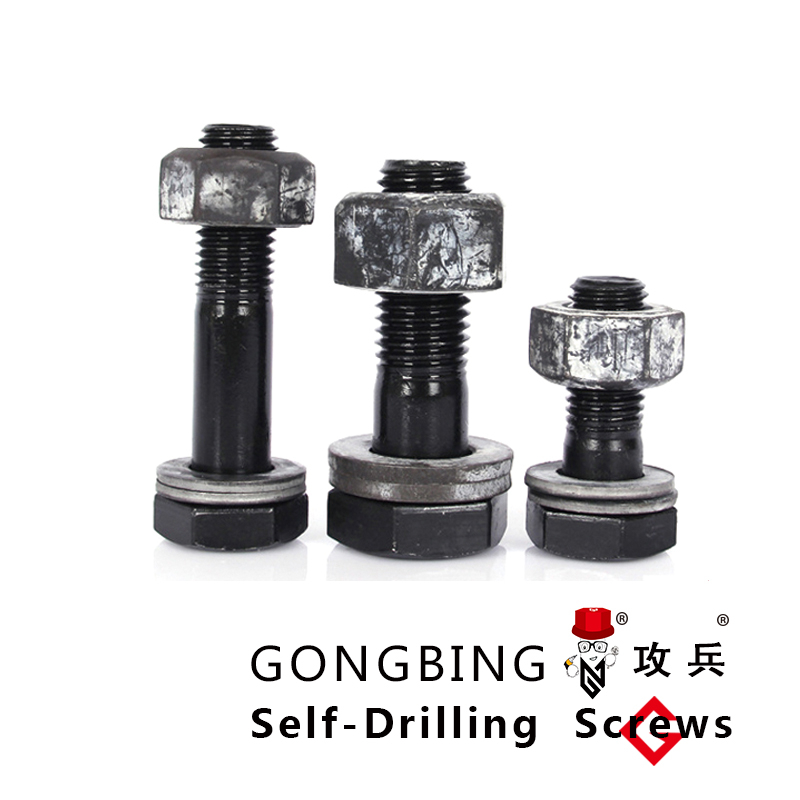Exploring M16 Chemical Anchors for Enhanced Stability and Performance in Construction Projects
Understanding M16 Chemical Anchors A Comprehensive Overview
Chemical anchors, including M16 chemical anchors, are essential components in modern construction and engineering projects. These anchors utilize a combination of a bonding agent and a mechanical fastener to create a solid and reliable connection between materials, typically between concrete and other structural elements. The M16 designation refers to the diameter of the bolt, which is 16 millimeters, a standard size that is often used due to its durability and strength.
Composition and Functionality
M16 chemical anchors typically consist of a threaded rod made from high-strength steel, which is inserted into a pre-drilled hole filled with a two-part resin or adhesive compound. This chemical adhesive cures and hardens inside the hole, binding the threaded rod securely within the substrate. The use of chemical adhesive in anchor systems offers several advantages over traditional mechanical anchors, especially in applications that require high load-bearing capacities and resistance to environmental factors.
Advantages of M16 Chemical Anchors
1. High Load Capacity M16 chemical anchors are designed to withstand substantial loads, making them suitable for heavy-duty applications. The combination of the rod and chemical adhesive provides exceptional tensile and shear strength.
2. Resistance to Environmental Conditions These anchors are particularly beneficial in environments where moisture or chemicals may be present, as the resin used is often formulated to resist such elements. This makes them ideal for use in areas exposed to water, chemicals, or temperature fluctuations.
m16 chemical anchors

3. Ease of Installation Installation of M16 chemical anchors is relatively straightforward. After drilling an appropriately sized hole, the anchor can be inserted into the resin-filled hole, and the adhesive cures over time, requiring minimal labor compared to some traditional anchoring methods.
4. Reduced Risk of Cracking One of the significant advantages of using chemical anchors, including the M16 variety, is their reduced risk of causing cracking in the surrounding material. This is particularly crucial in reinforced concrete, where structural integrity must be maintained.
5. Versatility M16 chemical anchors can be used for various applications, including securing structural steel, installing facades, anchoring machinery, and even for overhead installations. Their adaptability makes them a valuable choice across multiple sectors, including construction, manufacturing, and infrastructure development.
Applications
In practical applications, M16 chemical anchors are often used in both commercial and residential settings. They are widely utilized in fastening steel beams, heavy machinery, and equipment, as well as in various masonry and concrete structures. Additionally, they find applications in the installation of railings, signage, and other structural fixtures where a strong connection is essential.
Conclusion
In conclusion, M16 chemical anchors represent a reliable solution in the realm of anchor technology. Their ability to provide superior load capacity, resistance to adverse environmental conditions, and versatility makes them a preferred choice among engineers and builders. As construction demands evolve, the use of chemical anchors like the M16 will likely continue to grow, driven by their performance and the increasing need for robust, durable connections in a variety of applications. Embracing these advanced anchoring solutions can enhance the safety and stability of structures, ensuring that they meet rigorous standards and withstand the test of time.
-
Weatherproof Plastic Expansion Anchors for OutdoorNuachtJun.06,2025
-
Sustainability in the Supply Chain: Eco-Friendly TEK Screws ProductionNuachtJun.06,2025
-
Load-Bearing Capacity of External Insulation FixingsNuachtJun.06,2025
-
Double Head Bolts: Enhancing Efficiency in Industrial MachineryNuachtJun.06,2025
-
Corrosion Resistance in Chipboard Screws: Coatings for Wholesale DurabilityNuachtJun.06,2025
-
Butterfly Toggle Bolts : Enhancing Structural ResilienceNuachtJun.06,2025
